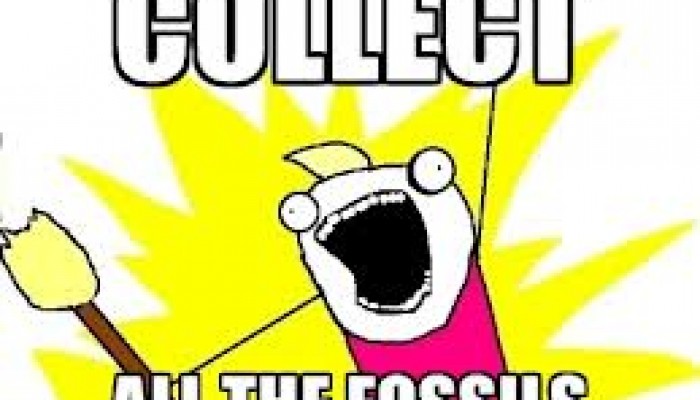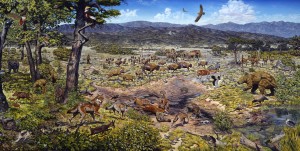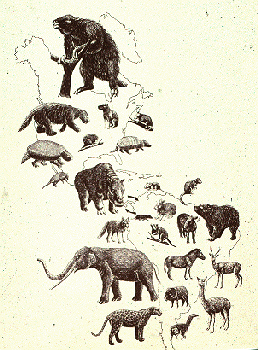
How can the dead help the living? This is a question a lot of fossil-fanatics have bent a lot of time towards over recent years, partially due to a desire to make palaeontology ‘relevant’ as a modern science, and secondly to help guide our efforts in conservation biology. A new series, edited by my supervisor Dr. Phil Mannion and others, focusses on the way we interpret palaeobiodiversity, biodiversity in the fossil record, for different groups and the issues and solutions facing the field. The final article in the volume struck me in particular.

How can fossils help us to protect these now and in the future? Source.
The entire volume is crammed full of awesome science (yes, there’s some on dinosaurs too!), and this one is available for free on the authors’ website too. The title of this one, ‘Using palaeontological data to assess mammalian community structure: Potential aid in conservation planning’, stood out to me among the rest as it explicitly stated that maybe there was an application in their research beyond understanding past biodiversity patterns and processes.
Their concept was simple. Analyse past community structure of mammals (community structure is things like their diversity and ecological interactions) to look at natural changes through time. They focussed on North America, as these have really well-defined ‘mammal-ages’ for a pretty awesome mammal fossil record. Combining this with information about the animals the environment (such as temperature), you can develop a set of ‘ecometrics’ that tell you about how animals have co-evolved with their environment through time.

I’ll have the steak please. Yes, the rare mammal. Source. (click for larger)
To compare environment to the mammals’ ecology, the authors compared temperature to their body mass and feeding style, dividing these into groups so that they compare how the diversity of these groups changed through time. We identified this as a pretty hefty problem with the study when discussing the paper in a local journal club we host in London. The groups they used, based on body mass and feeding style don’t seem to have any reasonable justification as to why the boundaries selected that define the different groups were picked. This is actually a pretty big problem, as it means the groups don’t really represent biologically meaningful categories, and may not be comparable as they’re simply subjective artefacts that have been applied to the data before analysis for the sake of simplicity. This is something you should be aware of whenever you see research that is comparing discrete groups taken from continuous data: how were the groups constructed, what do they represent, and can they be compared?
Their results were still pretty neat though, with the caveat mentioned above. They found that way back in North America around 16 million years ago, there were a lot more larger animals of all feeding types, and also, not necessarily in a related way, fewer smaller mammals in general too. This pattern was confirmed by two independent analyses that the authors ran, and shows that there are detectable variations in community structure in mammals through time that are independent of the way in which we classify them as species (taxonomically). There was a transition at some point between 9.5 to 5.9 million years ago where this structure broke down, and the communities in different places began to vary a bit more. This corresponds to a period in time where the Earth was about mid-way through a large-scale cooling trend (from about 14 million years ago to the present), but what we don’t know is the pace of the transition: was it a rapid change, or more gradual? This is where the fossil record fails us, as we simply can’t tell at this point with the resolution of fossils we have available over this period of time in North America.

Pleistocene mammals of North and South America. Source.
Unfortunately, that’s about as good as it gets. In one of the final paragraphs, the authors state, rather contrary to the title of the piece (which has the ‘conservation’ hook), that there is very little use in their analysis to aid conservation management due to the lack of meaningful comparability between past and present datasets. This is actually a bit of a problem, and for three main reasons.
- Time-averaging and time-scales. We still can only get down to a resolution in the vertebrate fossil record of at best, 1000s of years and at worst, 10s of millions (depending on how old the fossils are, the resolution of the rocks they’re buried in, and naturall uncertainty in dating methods), which isn’t really comparable to the time-scales we need them to be on to be relevant to modern animals.
- Sampling. Ah, sampling. An issue in the fossil record due to the hypervariable ways in which fossils are preserved, the unevenness of the rock record, and the way in which we humans have sampled the fossils from the rocks (I call this the ‘oh look a big pretty fossil hypothesis’). Modern faunas suffer, by comparison, of only representing a fragment of the tips of their lineages, with no historical content apart from what we can guess from their DNA. There also haven’t been enough ‘originations’, or creation of new species within modern times yet to counter-balance the background rate of extinctions, which skews observations of net biodiversity.
- The way in which we identify fossils is based on their hard parts, their bones, teeth and shells. Mostly, we know and identify modern species from their habits, behaviour, external features, and genetic divergence; things that aren’t readily preserved in the fossil record (usually). This means that the taxonomies of modern and extinct animals are based, often, on fundamentally different aspects of the animals.
H’okay, so these are three slight issues we’re still facing in Palaeontology in binding it together with conservation science. I think this is one of the biggest questions palaeontologists should be trying to resolve at the moment, and it’s volumes like this which are definitely a step in that direction. This isn’t really that new information – the annoying thing (for me) is that the spin played on the title of this article is dismissed within one line as not possible due to these flaws, which begs the question of why they even put it in the title. It wasn’t needed – the science and the acknowledgement that this was a key issue were enough without having to well, lie, in the title. We often hear about journalists adding ‘spin’ and angular hooks to science stories to make them ‘interesting’ or ‘relevant’ – let’s not start doing the same in our research: let the science speak for itself.


Dave Eden
I agree with your critique of scientists including “spin” before the journalists even see it. Not as an excuse, but as a broader explanation, I think this comes from endemic faddishness, driven by funding games. A related thing is how almost every study somehow related to atmospheric or surface water conditions is billed as “climate change” research, because that is the key phrase used in funding approvals. I don’t blame researchers for trying to get funding within the current paradigm/cause du jour. I don’t know how this can be fixed. Aside from a broad effort by scientists to use heroic clarity and integrity in how they describe their work, some de-politicization of the funding process would be in order.
For example, David Evans at the ROM recently posted this in a tweet:
http://www.tandfonline.com/doi/abs/10.1080/08989620802689821?url_ver=Z39.88-2003&rfr_id=ori:rid:crossref.org&rfr_dat=cr_pub%3dpubmed
It seems there’s a huge frictional loss in the system, comparable to charities spending huge percentage on administration at the expense of donations actually going to those who need it. With less of that sort of thing, the perceived need and temptation to spin research would be less.